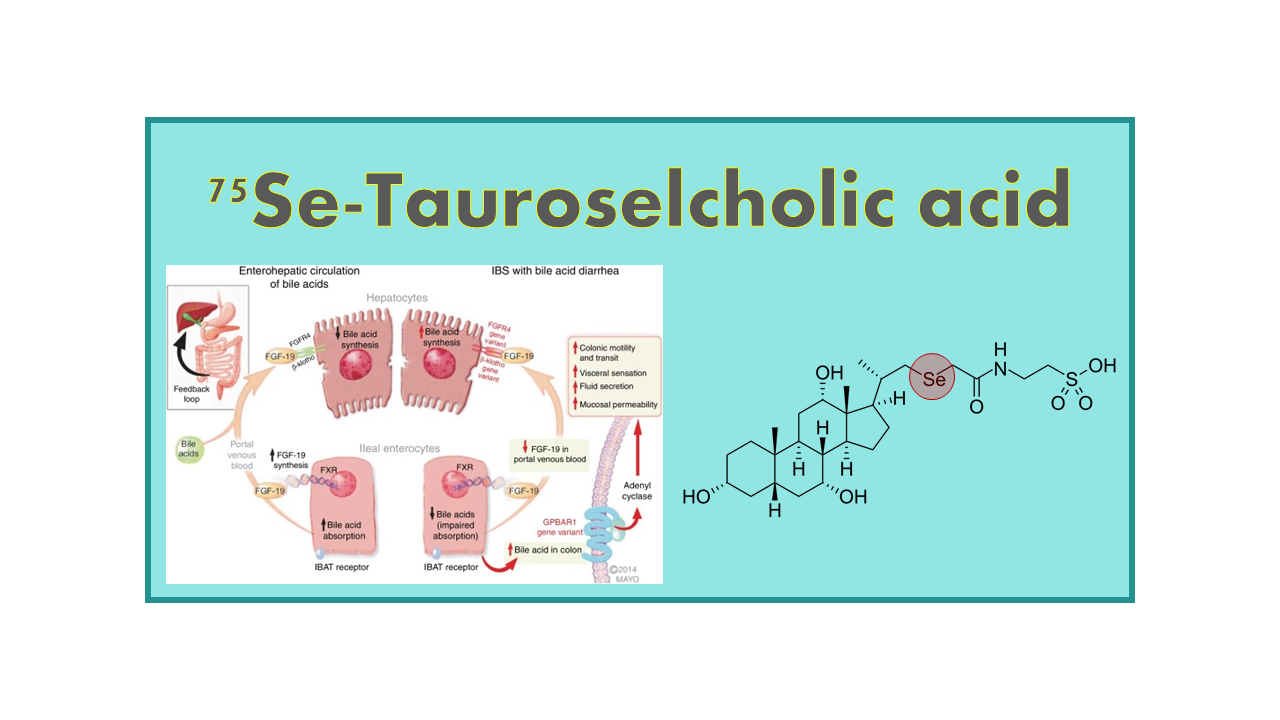
75Se-Tauroselcholic acid
March 7, 2024
75Se-Tauroselcholic acid is a compound that consists of the radioisotope selenium-75 (75Se) bound to tauroselcholic acid. Tauroselcholic acid is a conjugate of cholic acid and taurine, a bile acid that plays a role in the digestion and absorption of fats in the intestine.
The addition of the selenium-75 radioisotope allows for the compound to be used in imaging studies, such as nuclear medicine imaging techniques like SPECT (single-photon emission computed tomography) or PET (positron emission tomography). Selenium-75 is a radioactive isotope with a half-life of about 119.78 days, making it suitable for imaging applications.
The use of 75Se-Tauroselcholic acid in imaging studies can provide valuable information about the function and structure of organs and tissues, particularly in the context of liver and gastrointestinal studies where bile acids are involved.
It is important to note that the use of radioactive compounds like 75Se-Tauroselcholic acid should be conducted under strict regulatory guidelines and with proper safety precautions to minimize radiation exposure to patients and healthcare providers.
Description
75Se-Tauroselcholic acid (Selenium homocholic acid taurine or SeHCAT) is a 75Se-labeled bile acid analogue which shows identical physiological behavior with naturally occurring bile acid conjugates. It is available in capsules and administered orally.
Clinical applications
75Se-Tauroselcholic acid is used for the investigation of bile acid malabsorption (BAM) and measurement of bile acid pool loss. It may be used in the assessment of ileal function, in the investigation of inflammatory bowel disease and chronic diarrhea and in the study of entero-hepatic circulation.
Following oral administration in normal subjects (about 1 mCi), the largest part of the labeled bile acid is absorbed, mainly by the terminal ileum. The distribution of activity is almost entirely confined to the lumen of the biliary ducts, gut and liver and 97 to 100% of the tracer is excreted with a biological half-life of 2.6 days. SPECT images are taken shortly after tracer intake and after 7 days. Biodistribution of the tracer provides information about the biliary function.
Sources
The product is sold by GE Healthcare under the name SeHCAT.
Competition
Due to the very limited number of applications and the limited source of 75Se, there is no real competition for this very specific product.
Comments
Limited applications.